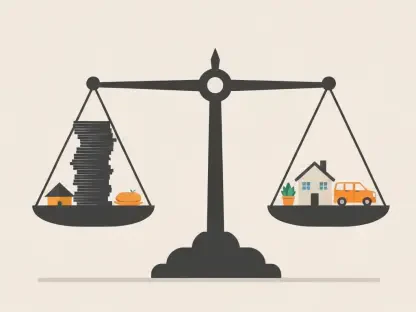The real-time payments (RTP) market in Europe is set to experience substantial growth, driven by the dual forces of technological advancements and evolving consumer preferences. As consumers increasingly demand instantaneous transactions and businesses seek more efficient payment solutions, RTP is quickly gaining traction across Europe. Regulatory frameworks, particularly supportive policies such as the Revised Payment Services Directive (PSD2), play a crucial role in fostering an environment conducive to RTP. This convergence of factors positions Europe’s RTP market on the cusp of substantial expansion.
Understanding Real-Time Payments
Real-time payments facilitate electronic fund transfers processed instantly, a stark contrast to the traditional methods requiring one to three days for clearance. The adoption of RTP in Europe indicates a societal inclination towards speed and convenience in financial interactions. Consumer expectations have evolved significantly over recent years, highlighted by the fact that over 60% of Europeans now demand immediate transaction confirmations. This surge in demand is spurred by the proliferation of digital wallets and the booming e-commerce sector, among other technological innovations.
As consumers increasingly integrate digital payment methods into their daily lives, the appetite for RTP solutions continues to grow. The ability to perform instantaneous transactions is no longer a luxury but a necessity driven by the fast-paced digital economy. This prevailing trend underscores the shift in consumer preferences towards more streamlined and efficient payment processes. Understanding the nuances of real-time payments is pivotal to grasping why the market is poised for robust growth. It’s not merely about speed but also the convenience and security offered by these advanced payment solutions.
Market Drivers and Regulatory Support
Consumer demand is indisputably one of the chief drivers of the real-time payments market. The necessity for instantaneous transaction confirmations underscores the push for RTP solutions, with consumers unwilling to tolerate the delays inherent in traditional payment methods. This shift towards real-time payment systems is significantly underpinned by regulatory support, most notably PSD2, which mandates open banking. By encouraging innovation in payment solutions, PSD2 has driven a substantial rise in open banking adoption across Europe. This regulatory framework has created an environment ripe for the flourishing of RTP services.
Additionally, the regulatory landscape in Europe has proven to be a powerful enabler for RTP. The PSD2 directive, which promotes transparency and competition within the financial sector, has significantly altered the dynamics of payment solutions. Open banking, an integral component of PSD2, has provided the necessary impetus for fintech companies to innovate and offer sophisticated real-time payment systems. This move towards open banking has fostered a collaborative ecosystem, wherein traditional banks and fintech companies can coexist and provide seamless, instantaneous payment solutions to consumers.
Technological Integration
Emerging technologies play a crucial role in enhancing the RTP ecosystem, making it more efficient and secure. Artificial intelligence (AI) and blockchain technology are at the forefront of this transformation. AI-driven fraud detection systems offer robust security measures, capable of identifying and mitigating potential threats in real-time. Blockchain’s inherent transparency and security attributes further bolster the credibility of RTP systems, ensuring that transactions are not only fast but also secure. These technological integrations significantly enhance the operational efficiency of RTP systems.
The fusion of AI and blockchain with RTP systems addresses some of the critical concerns surrounding security and trust in financial transactions. Businesses and consumers alike are increasingly drawn towards real-time payment systems that offer enhanced security features, thereby reducing the risk of fraud. Moreover, the transparency provided by blockchain technology instills a higher degree of trust among users, further aiding in the widespread adoption of RTP solutions. As these technologies continue to evolve, their integration with real-time payment systems is expected to become even more seamless and effective, driving further growth in the market.
Challenges to Overcome
Despite the promising growth trajectory, several challenges impede the widespread adoption of real-time payments in Europe. One of the most significant hurdles is the high cost of implementation. Transitioning to RTP systems requires considerable financial outlays, ranging from €500,000 to €2 million per financial entity. This poses a substantial barrier, particularly for smaller financial institutions that may struggle to allocate the necessary resources for such a transition. The integration of sophisticated technologies and upgrading existing infrastructure to support real-time payments can be prohibitively expensive.
Cybersecurity remains another major concern. The increasing frequency of cyber-attacks on payment systems poses a significant threat to consumer trust in RTP solutions. Despite the advanced security measures offered by technologies like AI and blockchain, consumer apprehension remains high. Reports indicate that 50% of consumers harbor reservations about the security of real-time payment systems. This lack of confidence serves as a considerable impediment to the broader adoption of RTP solutions. Addressing these security concerns is paramount to building consumer trust and fostering widespread acceptance of RTP systems.
Market Fragmentation and Resistance
The fragmentation of payment systems across European member states poses yet another challenge to the widespread adoption of real-time payments. Inconsistencies and lack of interoperability between different national systems hinder the seamless execution of RTP across borders. The resistance from traditional financial institutions further exacerbates this issue. These institutions, accustomed to established payment systems, often show reluctance towards transitioning to real-time payment solutions.
Only 75% of EU banks had adopted the SEPA Instant Credit Transfer as of 2023, highlighting the gaps in system accessibility and interoperability. This lag in adoption indicates that significant work remains to be done to create a unified and cohesive RTP landscape across Europe. Overcoming these challenges will require collaborative efforts among regulatory bodies, financial institutions, and technology providers to harmonize payment systems and promote the benefits of real-time payments. Harmonization and collaboration will play crucial roles in breaking down the barriers that currently impede the seamless adoption of RTP.
Opportunities for Expansion
Despite the challenges, the RTP market presents significant opportunities for growth and expansion. One notable avenue is the expansion of cross-border real-time payments, driven by the SEPA Instant system. Cross-border RTP volumes are growing annually by 45%, demonstrating the robust demand for instantaneous international transactions. This growth represents a substantial opportunity for financial institutions and payment service providers to tap into new markets and expand their service offerings.
Another significant opportunity lies in the integration of advanced technologies with RTP systems. The incorporation of AI and blockchain not only enhances security but also reduces operational costs. Studies indicate that these technologies can potentially reduce operational expenses by 25% and increase transaction speeds by 15%. Such efficiencies offer a marked technological advantage, positioning RTP systems as the preferred choice for both consumers and businesses seeking secure and efficient payment solutions. The continuous evolution and integration of these technologies will likely drive further growth and innovation in the real-time payments market.
Regional Insights
Examining the European RTP market reveals significant regional disparities, with certain countries leading the charge in adoption and innovation. Germany stands out as a frontrunner with a 24.9% market share in 2024. The country’s robust financial infrastructure and high adoption rates of SEPA Instant Credit Transfer exemplify how strong financial systems can accelerate RTP adoption. Germany’s proactive approach to embracing real-time payments sets a benchmark for other regions.
The United Kingdom, with its thriving fintech ecosystem and advanced digital infrastructure, also emerges as a key player in the RTP market. The UK’s continued investment in technology and innovation positions it for healthy growth in the sector. The nation’s fintech companies are at the forefront of developing and implementing cutting-edge payment solutions, driving the uptake of RTP systems. This vibrant fintech landscape fosters an environment conducive to rapid advancements in real-time payment technologies.
France, too, demonstrates significant potential in the RTP market. Strong regulatory support and a heightened focus on cybersecurity contribute to its steady growth. With an estimated compound annual growth rate (CAGR) of 18.3% over the forecast period, France is well-positioned to capitalize on the expanding RTP market. The country’s regulatory framework and emphasis on secure financial transactions create a solid foundation for the adoption of real-time payment solutions. France’s strategic focus on cybersecurity further bolsters consumer confidence, aiding in the broader acceptance of RTP.
Market Players and Dynamics
The competitive landscape of the European RTP market features several major players driving innovation and expansion. Companies such as ACI Worldwide Inc., Fiserv Inc., PayPal Holdings Inc., Mastercard Inc., and VISA Inc. are at the forefront of the market, continuously advancing their technologies to stay ahead. These firms are pivotal in shaping the RTP ecosystem through their investments in research and development, ensuring that their offerings meet the evolving needs of consumers and businesses.
These market players play a crucial role in fostering a dynamic and competitive environment. Their involvement underscores the commitment to continuous improvement and adaptation of new technologies, which are essential for maintaining market leadership. As they strive to enhance their RTP solutions, these companies contribute to the overall growth and development of the market. Their innovations not only drive the adoption of real-time payments but also set new standards for efficiency and security in financial transactions.
The Path Forward
The real-time payments (RTP) market in Europe is poised for significant expansion, driven by the combined forces of technological advancements and shifting consumer preferences. With the increasing demand from consumers for immediate transactions and from businesses for streamlined payment systems, RTP is rapidly gaining momentum across the continent. Essential to this growth are regulatory frameworks, particularly supportive policies like the Revised Payment Services Directive (PSD2), which create a favorable environment for RTP to flourish.
Technological innovations are revolutionizing the payments landscape, making real-time transactions not only feasible but increasingly routine. Consumers expect their financial interactions to be as instantaneous as their digital communications, creating a strong demand for RTP services. At the same time, businesses are recognizing the benefits of faster payments, such as improved cash flow management and enhanced customer satisfaction.
Regulatory support, especially through initiatives like PSD2, ensures that the infrastructure needed for RTP is sound and secure. These regulations promote competition and innovation, encouraging more market participants to offer RTP services. This convergence of consumer demand, business needs, and regulatory support places Europe’s RTP market on the brink of substantial growth, setting the stage for a future where real-time payments become the norm rather than the exception.









